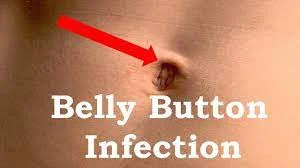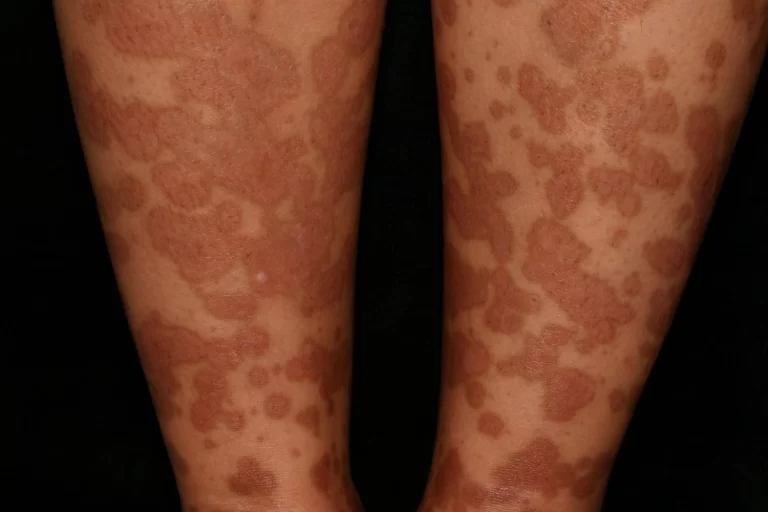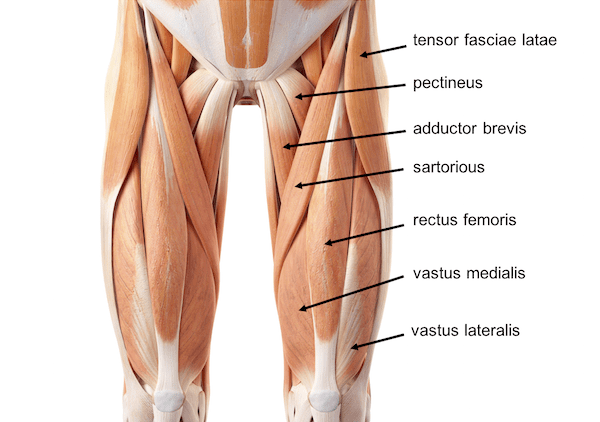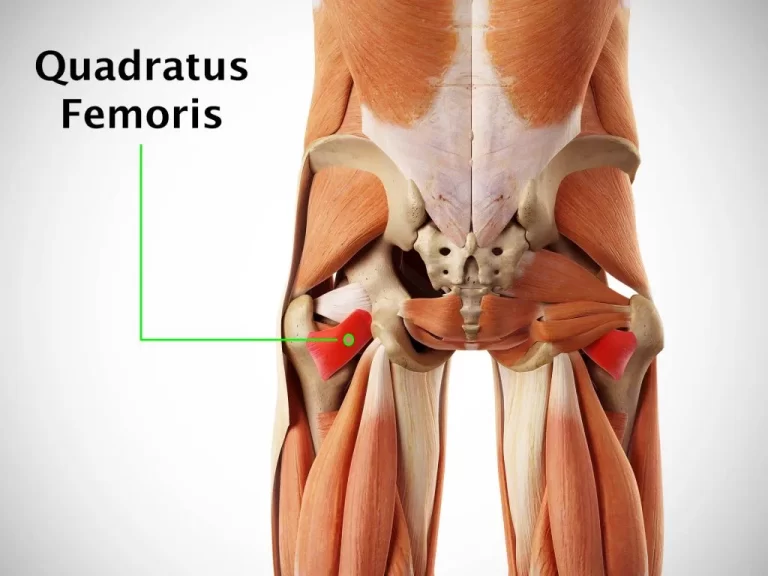Belly Button Infection
What is a Belly button infection?
Belly button yeast infections don’t just happen in the lower parts. but it should really show up virtually anywhere on the body, involving the belly button. A belly button yeast infection is a yeast infection without the skin of the belly button (navel). A yeast infection of the skin is named candidiasis. Candidiasis is a fungal infection. It’s induced by a yeast called Candida. Yeast is a type of fungus. candidiasis creates a bright red, itchy rash in the novel region and generally grows in hot and dark environments
The skin has many types of fungi plural for fungus and yeast that live on the skin. In healthy people, candidiasis typically shouldn’t cause any hurt. But when Candida gathers in moist, dark regions, it should crack under the surface of the skin. This will provoke a skin infection. Candidiasis should happen almost anywhere on the body. But it’s most repeatedly seen in the watery gaps of the skin like the belly button.
Types of the Belly Button
Protruding type
Protruding belly buttons are repeatedly called “outies.” An evaluated ten percent of the people have a protruding belly button with the rest people having an innie.
An outie shape ensues when the remaining part of the umbilical stump, where the umbilical cord was connected, goes out rather than inside
Deep hollow shape
A deep hollow belly button will generally arise if there’s a shadow beneath the belly button’s highest fold.
This belly button style corresponds to a little open mouth. few people in the deep hollow category might have a funnel belly button, which is common with extra abdominal fat.
The vertical typically narrow shape
Some doctors comprehend a vertical belly button as a divided belly button because the vertical belly button looks like the part of the stomach which creates a minor upward and downward division.
A vertical belly button is in general very small hooding beyond its top, in spite of observing little as an I letter impressed in the skin surface. A vertical belly button is the most ordinary belly button type.
The horizontal typically narrow shape
Also comprehended as a T-type belly button, a horizontal belly button is the most ordinary belly button which moves horizontally. A depression at the top of the belly button might look like a line that crosses a T shape.
The horizontal belly button type varies from a deep hollow belly button because the top part of the skin surface almost wholly shielded the innermost part of the belly button.
Round
A round belly button isn’t absolutely an outie belly button but it’s tight. A round belly button is yet concave or protruding inward side. However, the round belly button doesn’t have any hooding or shielding, in spite, it emerges a symmetrically rounded shape.
Light bulb
A light bulb-shaped belly button has very small hooding on the top side, with a narrow egg shape that tightens as it goes down much like a light bulb.
few individuals also compare a light bulb-shaped belly button with an upward or down beer or/and wine bottle.
Symptoms of a Belly button infection
The most familiar symptom of a belly button yeast infection is a shining red rash in the skin folds of the navel. The rash is typically intensely itchy. It might burn. an individual might also watch scaling, swelling, or a white discharge.
Belly button yeast infections shouldn’t normally induce a smell or odor. But individuals might watch a musty smell if the yeast infection is because of a skin condition called intertrigo. Intertrigo is very common and occurs because of a mixture of heat, moisture, and skin scratching together.
Causes of a Belly button infection
Conditions that permit belly button yeast infection candidiasis to expand and succeed contain:
- Wearing tight clothes.
- Not changing clothes frequently according to the temperature of the body.
- Moist and hot climate.
- Inadequate hygiene.
- Skin conditions like intertrigo and psoriasis.
Belly button yeast infections are more standard in some groups of people. This contains people who will have
- pregnant.
- individuals have overweight or obese.
- Some people have assumed antibiotics that should destroy the bacteria that commonly live on the skin named Candida which grow and succeed.
- should obtain cancer treatment like chemotherapy in the past.
Belly button yeast infections are also more general in people with more weakened immune systems. People with conditions like human immune viruses, acquired immune deficiency syndrome, or diabetes should have a great possibility of generating yeast infection.
Bacterial Infection
If someone has an “innie” belly button, the folds of the skin should turn into moisture and rubbish. Damp, warm, dark spots should premium environments for bacterial growth. If someone has bacteria growing in the belly button, it will tend to occur an infection
the doctor must observe the symptoms of infection if that happens to bacterial infection. The signs contain:
- Redness
- Pain
- Swelling
- foul odor
- Pus or other fluids that spread out
If the person thinks he/she has an infection in the belly button, they should call the doctor so that the doctor should have clean that place carefully. He/she might also require a drug prescription of antibiotics to kill the bacteria before going to other parts of the body.
Yeast Infection
a type of yeast that typically arises in damp, dark areas of the body, causing a yeast infection named candidiasis. It should appear between skin folds, like in the groin region and under the arms.
Yeast should also bring up home in the belly button, specifically if the person shouldn’t maintain the belly area clean and dry.
Candidiasis in the belly button provokes a red, itchy rash on the belly button and might also provoke a thick, white discharge.
People with diabetes are at a higher chance of all types of infections.
Bacteria shouldn’t be the only thing that grows sufficiently in a site like the belly button. Yeast, a fungus that happens unaffectedly on the skin, should also increase in the navel. An overgrowth of yeast should lead to itchy, irritated skin. It’s very equivalent to vaginal yeast infections or the thrush type that ensues in the mouth.
Symptoms of a yeast infection contain:
- Redness
- Itching
- Pain
- Discharge
- fever
- pain or difficulty urinating
- sore abdominal muscles
- redness in the belly button area
- tenderness surrounding the belly button
Call the doctor if suspect a yeast infection in the belly button. the doctor might suggest treating the infection with an over-the-counter, anti-fungal cream. The doctors might also suggest him/her keep that zone clean and dry. If that shouldn’t work, they might prescribe a stronger anti-fungal treatment.
To treat a yeast infection
- Preserve the skin of the belly button clean and dry.
- Utilize an antifungal powder or cream to clear up a yeast infection.
- For a bacterial infection, the doctor might suggest using an antibiotic ointment. Some infections might need oral antibiotic treatment, abdominal incision and drainage of the cyst, or both.
- If he/she has diabetes, perform with the endocrinologist to make sure the blood sugar is well handled
staph infection
A staph infection should display in a number of ways, involving a highly virulent condition called impetigo, according to the American Academy of Dermatology. Non-bullous impetigo should cause symptoms like itchy sores that burst and leave after red, raw skin, along with a yellow skin surface, Then there’s bullous impetigo, which should conduct to liquid-filled blisters that crack open and exit the surface sores. Between the sores and the skin surface, the two types of impetigo will have a lot of common inappropriateness. One major difference between the skin surface and sores is that bullous impetigo shouldn’t lead to cause reddened skin, whereas non-bullous impetigo causes reddened skin.
Staph skin infections should also seem to be pimples, which are mostly warm small pockets of pus that stay beneath the skin.
It’s possible to receive a bacterial infection like staph in the belly button because that’s just what the body selects to do that moment but obtaining a belly button penetrating place which will be a big risk factor, It’s the most common reason for an infection in a belly button area.
If the person obtaining the belly button is stuck, ask the piercer how to tell the difference between the normal healing process and possible signs of a bacterial infection. Also, take follow up on the person’s penetrating aftercare instructions eagerly.
If he/she just got an infection in the belly button which penetrates near the area of the navel thinks he/she might have an infection or start a period, of infection. the person should go to a dermatologist or go to an urgent care center depending on the severity of the symptoms. the doctor should try to choose what kind of bacteria is generating the issue, then suggest treatment like antibiotics to help.
A strep infection
Streptococcus bacteria is an additional common disease of skin infections whole belly button infections in special bacteria
Like Staphylococcus aureus, Streptococcus should cause impetigo that should also cause cellulitis, which normally ensues when a group of streptococcal bacteria worms its way into the body via an opening area on the skin like a cut
Cellulitis should generate a painful, red, tender, swollen rash that might blisters and scabs, cellulitis should also spread beyond the skin and impact the underlying tissues, so the person might experience a fever, chills, and swollen lymph nodes. If notice these kinds of symptoms, see a doctor as soon as possible for antibiotics medicine.
epidermoid cyst
Epidermoid cysts should appear anywhere on the skin. epidermoid cysts happen when epidermal cells get entrapped and multiply under the skin surface, creating lumps that might be painful or tender to the touch stimuli. These cysts shouldn’t be harmful but should be irritating or discomfiting.
If he/she has a lump or mass in the belly button, he/she should take an appointment with a doctor. They should examine and make sure it won’t be something more serious, like skin cancer. If it’s a cyst, the person might require to have it surgically dragged. the doctor should likely execute the procedure of removing the cyst in their office.
An epidermoid cyst is a spot that should initiate in the belly button as well as on other parts of the body. Epidermoid cysts are the most standard type of cysts discovered on the skin.
The cyst walls are equivalent to the skin surface or the upper part of a hair follicle. The cyst cavity is filled with keratin protein, a type of protein naturally found in the nails, hair, and skin.
even if epidermoid cysts are sometimes incorrectly termed to as sebaceous cysts. However, the use is incorrect, since epidermoid cysts shouldn’t involve the sebaceous glands.
There might be a blackhead in the middle of the cyst. If the cyst is contaminated, a thick, yellow, and foul-smelling release will drain from the cyst. The cyst might also be converted into red and swollen.
Urachal cyst
When the person should develop in the mother’s womb, the bladder is attached to the umbilical cord by a small tube named the urachus. This is how urine drains from the body.
Normally, the urachus closes up before birth, but sometimes urachus fails to close correctly.
A fluid-filled growth named a cyst should create on the urachus, and the cyst should get contaminated. One symptom of this infection is dirty or bloodstained fluid spreading from the belly button.
Other symptoms of urachal cysts contain:
- abdominal pain
- fever
- a lump in the abdomen
- pain when the person urinates
To treat a urachal cyst
the doctor would first treat the infection with oral or topical antibiotics. The cyst might require to be drained as well.
Umbilical Hernia
An umbilical hernia ensues when there’s a gap in the muscle instantly after the belly button. A section of the intestine should protrude via that opening, resulting in an “outie” belly button. Not all outies are hernias, however. Some navels protrude naturally.
Umbilical hernias are most common in infants and don’t provoke any pain. In many cases, the child’s muscles will lock on their own, and the hernia should go away near age five.
If the hernia shouldn’t heal on its own, the child will require surgery to thrust the intestine into place and shut the gap between the muscles. This is a common technique with very few dangers. The child should require general anesthesia for the operation, but the doctor should normally go home on the same day as the operation. Recovery takes approx a week.
Adults should also generate umbilical hernias, though it shouldn’t be very common. Surgery is the only path to improve an adult umbilical hernia. If the person thinks he/she has an umbilical hernia, the doctor should assist him/her plan for surgery.
Navel Stone
In very infrequent cases, dead skin and debris should create up inside a belly button and render a navel stone. The remains of dead skin cells, sebum from the skin, and additional dirt or debris clump up and create a solid mass. The consequent stone should look like the material the people might discover in a blackhead on the skin.
Navel stones should not be harmful and normally should not generate pain. the doctor should likely dismiss navel stones in their office. people should control navel stones from arriving back by keeping their navel clean.
Diabetes
Conditions like diabetes might put a person in exposure to bearing a discharge from their belly button infection at distinct times. According to analysis in the Journal of Pediatric & Adolescent Gynecology, there seems to be a link between high blood sugar and candida yeast infections.
People with diabetes frequently have higher blood sugar rather than normal, and yeast delivers this elevation of sugar. The yeast should after that circulate more easily in the body and on the skin.
Diagnosis for Belly button infection
the healthcare provider might execute a physical examination. The health care provider might be able to inform he/she of a yeast infection by looking at the skin of the navel region. A bright red rash is a standard sign of a belly button yeast infection.
the healthcare provider might desire to test a sample of the infected area and use a tongue depressor muscle or scalpel to lightly rub some of the skin from the navel region. A lab technician would investigate the sample beneath a microscope. Or the lab technician might place the sample in a culture. Culture is an essence that gives grant the sample to expand so the fungus should be recognized.
If someone does have a yeast infection, the healthcare provider might suggest testing for diabetes. High blood sugar levels in people with diabetes should be utilized as food for yeast and help to expand the yeast.
Treatment for the Belly button infection
Treatment for the belly button yeast infection might contain an antifungal medication. Your healthcare provider might suggest an antifungal cream, ointment, or powder. the person uses the antifungal substance instantly onto the skin of the belly button. the person should also discover many antifungal creams and over-the-counter medicines. the healthcare provider might offer a prescription antifungal pill if essential.
individual essential to maintain the navel region clean and dry as part of the treatment. Maintaining the region clean and dry must also assist stop yeast infections from producing. Disclosing the belly button to air must assist as well.
In specific cases, the healthcare provider might indicate an antifungal drug taken by mouth. Medications like fluconazole should be swallowed orally.
Antibiotics: Bacterial infections should generally be treated with antibiotics defined by a healthcare professional.
Warm Compresses: Using warm compresses on the infected place should support to lessen inflammation and encourage healing.
Proper Wound Care: Maintaining the belly button clean and dry is crucial for effective treatment.
Surgical Intervention: In severe cases, the surgical intervention must be instructed to drain a spot or release an infected piercing.
Prevention
Losing weight must support stopping the overgrowth of yeast in the navel area. If someone has diabetes, be sure to maintain proper blood sugar control.
To maintain the belly button healthily and to support stop infections:
- Wash every day with a soft antibacterial soap and water. Utilize the washcloth or sponge to obtain inside the belly button and clean out any kind of dirt that’s inside. Individuals should also utilize a saltwater solution to clean the belly button.
- After the bathe, dry the inside of the belly button entirely.
- Don’t place any kind of creams or moisturizers inside the belly button. The cream must block up the hole and motivate bacteria or yeast to develop.
- ignore wearing tight clothes, which should trouble the belly button. Rather than, wear loose, comfortable clothes created from natural fibers like cotton and silk.
- Avoid penetrating the belly button. If the individual should obtain a penetrating, keep the place clean to help stop the infection
Things That Should Go Wrong With the Belly Button
Everyone has a belly button. It’s the tiny fold of skin that is made in the abdomen after the umbilical cord was attached at birth. Belly buttons are concave from the inner side or convex from outside
Most of the time, belly buttons haven’t disturbed an individual. But like any part of the skin, it should be liable to infection or injury. If individuals notice pain, swelling, or release from their navel, they must have an infection or injury
Caring for the Belly Button
To bypass infection or dirt and mud in the belly button, make sure to maintain it clean and dehydrated. Soap and water should be efficacious for cleaning the skin inside the navel. Individuals must require to utilize their fingertip, a washcloth, or a cotton swab to softly clean inside any folds in the belly.
Conclusion
Belly button infections can generate distress and pose probable health risks if gone untreated. By comprehending the causes, symptoms, prevention techniques, and available treatments, individuals should carry forceful actions to maintain a healthy belly button. Recognize, if anyone assumes an infection, desires medical guidance promptly to assure proper care and a punctual explanation of the issue.
FAQS
What should an individual expect if they have a belly button yeast infection?
Belly button yeast infections frequently get better on their own when individuals keep their navel place clean and dry. Healthy people should usually treat belly button yeast infections with an antifungal prescription as advised by the doctor.
What complications should appear because of a belly button yeast infection?
Belly button yeast infections repeatedly replace, particularly if the navel region shouldn’t be kept healthy and dry. Yeast infections should be more probable to return in people with fatigued immune systems.
What happens if anyone quit a belly button infection?
Tenderness, yellow, green area, or bloody nasty smelling white discharge, swelling, pain, and surface or ulcer must grow in the belly button. If a deep skin infection happens, it should conduct to cellulitis a contagious bacterial infection normally provoked by staph or strep bacteria.
How long does the belly button take to recover?
The belly button should be cured and dry in seven days.
How repeatedly should anyone clean the belly button?
Most bellybuttons should have cracks that should accumulate dirt and breed bacteria. Seek to clean the belly button around once a week. two times
What heals an infected belly button?
Apply an over-the-counter antibacterial cream that heals an infected belly button.
An ointment with bacitracin like Neosporin should treat the infection and aid in wound healing
What is the belly button rule?
Belly Button Rule Speaking and Presenting in a virtual Wherever speaks, he/she points the belly bottom. So when he/she should utter to you beyond here, he/she would point to the belly button. If the belly button moves over here, she/he points to the belly button. That’s the belly button rule.
Is it good to put oil on the belly button?
Yes, There’s no injury in putting a small oil in the belly button. Just don’t press down too tough on the belly button, as there’s a large number of nerves near the gastrointestinal, and the pressure must be painful. Be careful with the oils anyone usage.








One Comment